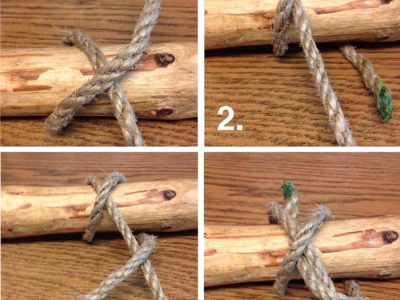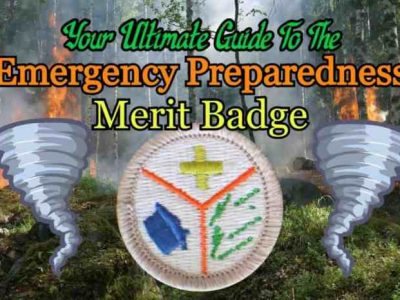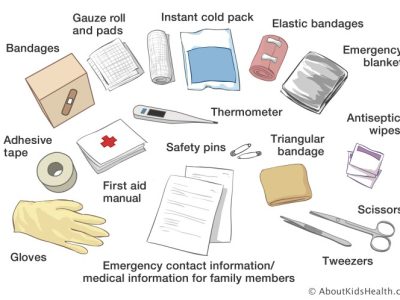Scout campfire safety tips are paramount for an enjoyable and hazard-free outdoor experience. Embark on a journey of fire safety precautions, firewood selection, campfire etiquette, and emergency preparedness, ensuring a memorable and safe campfire adventure.
From choosing the ideal location to extinguishing the campfire completely, this comprehensive guide provides invaluable insights into responsible campfire practices. Learn the art of selecting suitable firewood, minimizing environmental impact, and responding effectively to emergencies.
Fire Safety Precautions
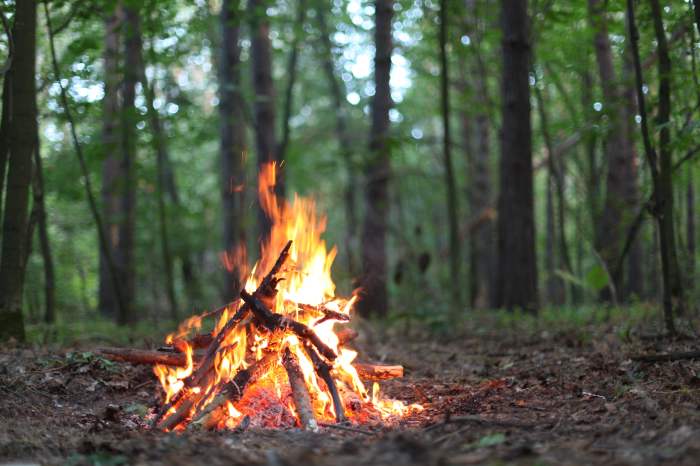
Campfires are an essential part of any camping trip, but they also pose a potential fire hazard. It is important to take precautions to ensure that your campfire is safe and does not cause any damage to the surrounding environment.
The first step in campfire safety is to choose a safe location for your fire. The fire should be built in a clearing away from trees, shrubs, and other flammable materials. The area should also be free of overhanging branches.
Clearing a Designated Area and Creating a Fire Ring
Once you have chosen a safe location, you need to clear the area of any flammable materials. This includes removing leaves, twigs, and other debris. You should also create a fire ring by digging a shallow trench around the perimeter of the fire.
The fire ring will help to contain the fire and prevent it from spreading.
Starting a Fire Safely Using Dry Tinder and Kindling
Once you have cleared the area and created a fire ring, you can start building your fire. Start by gathering dry tinder and kindling. Tinder is small, dry materials that will easily catch fire, such as dry leaves, grass, or paper.
Kindling is larger, dry materials that will help to build up the fire, such as small sticks or twigs.
To start the fire, place the tinder in the center of the fire ring. Then, build a teepee-shaped structure around the tinder using the kindling. Light the tinder and allow it to burn until it has caught hold of the kindling.
Once the kindling is burning, you can add larger pieces of wood to the fire.
Proper Methods for Extinguishing a Campfire Completely
When you are finished with your campfire, it is important to extinguish it completely. The best way to do this is to drown the fire with water. Pour water over the fire until it is completely out. You can also stir the ashes to make sure that there are no embers remaining.
Firewood Selection and Preparation: Scout Campfire Safety Tips
Choosing the right firewood is crucial for a safe and efficient campfire. Ideal firewood should be seasoned, dry, and free of mold or decay. Seasoning refers to the process of drying out wood, which removes moisture and makes it burn cleaner and hotter.
Gathering and Seasoning Firewood
Gather firewood from dead or fallen trees, avoiding live or green wood. Split logs into smaller pieces for faster seasoning. Stack the firewood in a well-ventilated, sunny location for several months to allow it to dry thoroughly.
Benefits of Dry, Seasoned Wood
Dry, seasoned wood burns with a brighter flame, produces less smoke, and leaves fewer embers. It also ignites more easily and provides longer-lasting heat. Conversely, burning green or wet wood can produce excessive smoke, sparks, and creosote buildup in the chimney, posing fire hazards.
Hazards of Green or Wet Wood
Green or wet wood contains high moisture content, which can prevent it from burning efficiently. It can also produce a lot of smoke, which can irritate the eyes and lungs. Additionally, burning wet wood can damage the chimney or stove due to the formation of creosote, a highly flammable substance that can cause chimney fires.
Campfire Etiquette and Responsibilities
Maintaining a harmonious and safe campfire experience requires adhering to specific principles of etiquette and responsible use. Respecting fellow campers and preserving the surrounding environment are crucial aspects of campfire etiquette.
Minimizing Noise and Light Pollution
- Consider the proximity of other campsites and adjust noise levels accordingly.
- Use lanterns or flashlights instead of open flames for illumination, reducing light pollution.
- Avoid loud conversations or excessive laughter that may disturb neighboring campers.
Respecting the Environment
- Build campfires only in designated areas and avoid creating excessive smoke.
- Never leave a campfire unattended and ensure it is completely extinguished before leaving.
- Use existing fire rings or create a small, contained fire pit to minimize ground damage.
Leaving the Campsite Clean
- Dispose of all trash and food waste properly in designated containers.
- Break down and scatter any remaining firewood to prevent tripping hazards.
- Fill in any fire pit or trench dug during the campfire and leave the campsite as you found it.
Emergency Preparedness
Campfire safety involves being prepared for potential emergencies. Identifying fire hazards and taking preventive measures is crucial to avoid accidents. It is equally important to have a fire extinguisher or water source readily available to control any flare-ups. Establishing a fire watch system ensures someone is designated to monitor the campfire and respond promptly to emergencies.
Potential Fire Hazards
Dry vegetation, overhanging branches, and flammable materials near the campfire pose significant fire hazards. Clear the area around the fire pit of any potential fuel sources, and keep a safe distance from tents, trees, and other structures.
Fire Extinguisher and Water Source
Keep a fire extinguisher or water source nearby to extinguish any flare-ups. Choose an extinguisher rated for Class A fires, commonly used for burning wood and paper. A bucket of water or a nearby stream can also serve as an effective water source for extinguishing small fires.
Campfire Emergencies, Scout campfire safety tips
In the event of a campfire flare-up or spread, remain calm and take immediate action. Use the fire extinguisher or water source to control the flames. If the fire becomes uncontrollable, evacuate the area immediately and call for help.
Fire Watch
Designate a responsible individual to serve as a fire watch. This person should monitor the campfire continuously, especially at night or when unattended. The fire watch should ensure the fire remains contained and extinguish any embers or sparks that may escape.
Summary
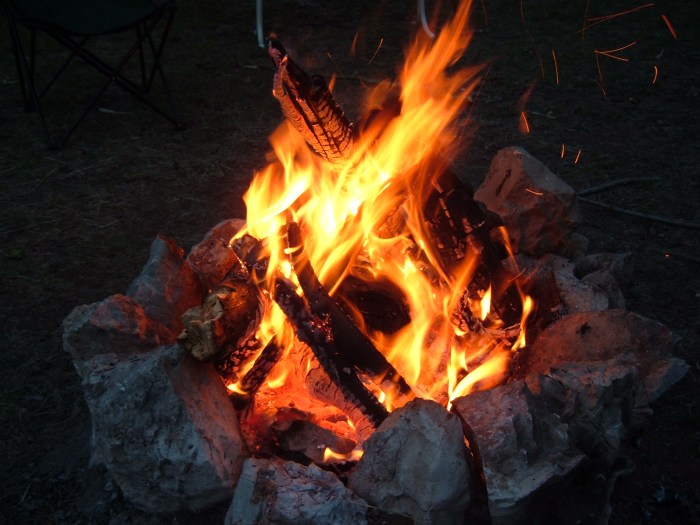
By adhering to these Scout campfire safety tips, you not only safeguard your well-being but also contribute to a harmonious and responsible camping environment. Embrace the warmth and ambiance of a campfire while prioritizing safety, leaving behind a legacy of responsible outdoor stewardship.
FAQ Guide
What is the most important fire safety precaution?
Building a campfire in a safe location, away from flammable materials and overhead hazards.
How can I minimize noise and light pollution around the campfire?
Keep voices low, use flashlights instead of lanterns, and avoid shining lights directly into other campers’ tents.
What should I do if my campfire flares up or spreads?
Stay calm, use water or a fire extinguisher to control the flames, and call for help if necessary.

